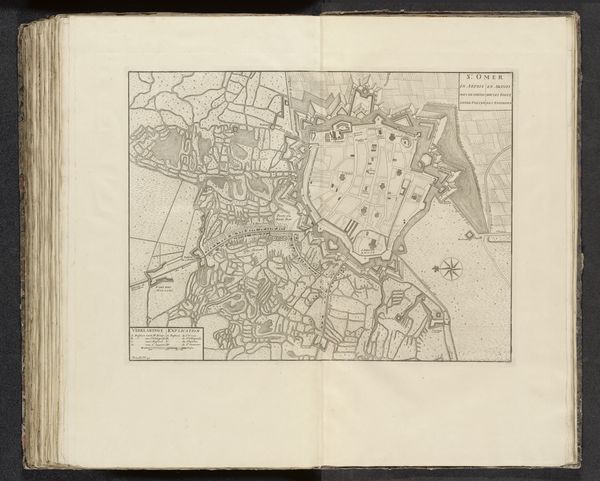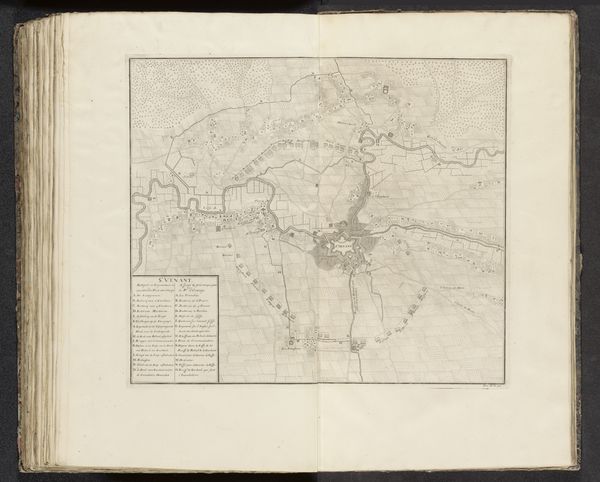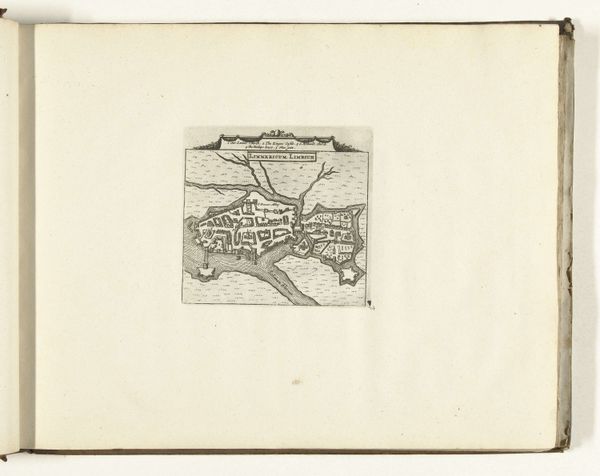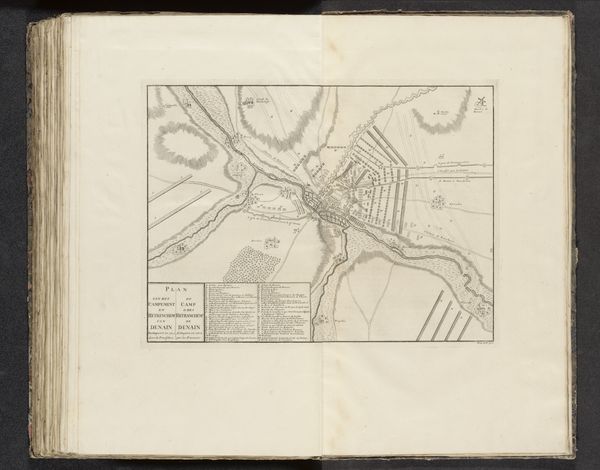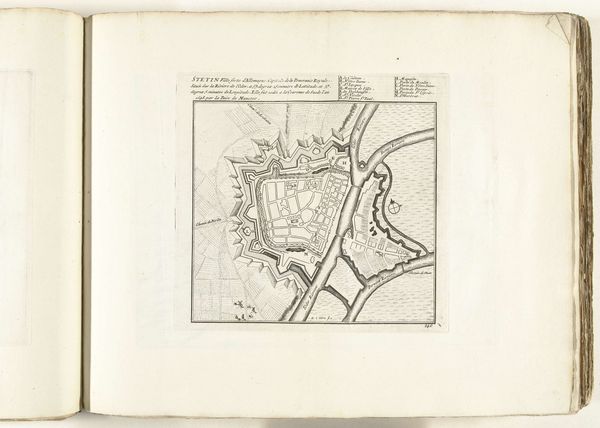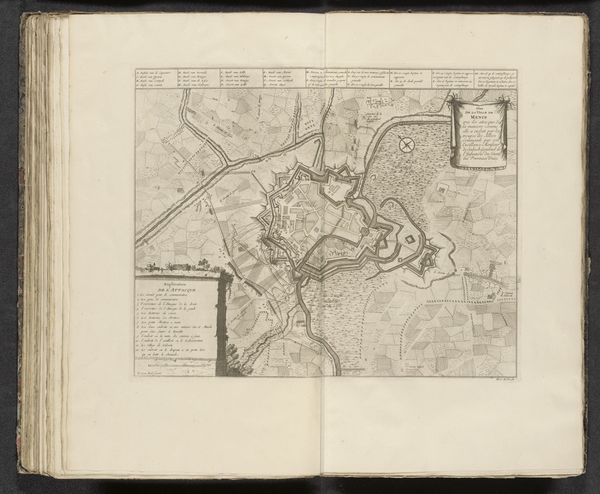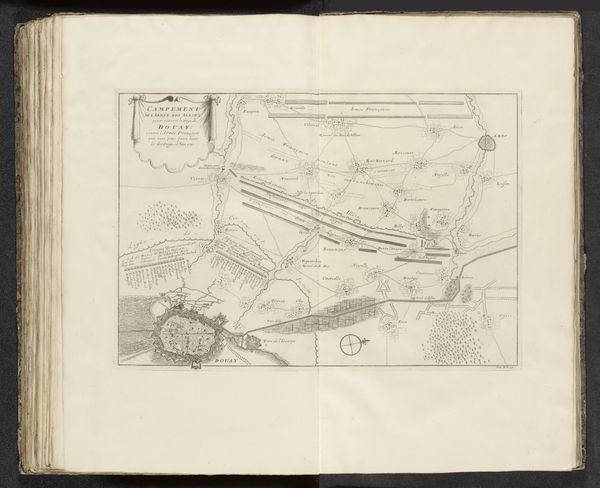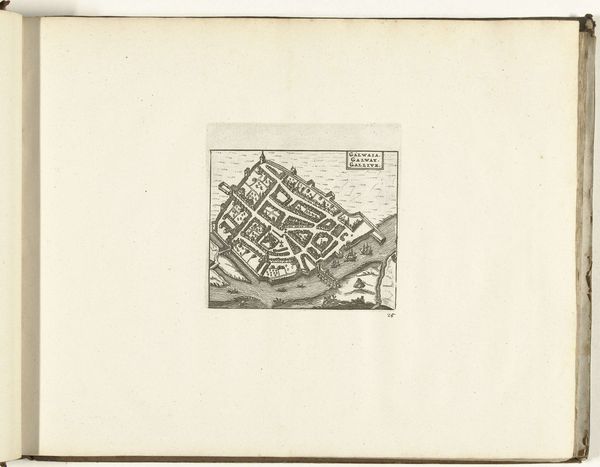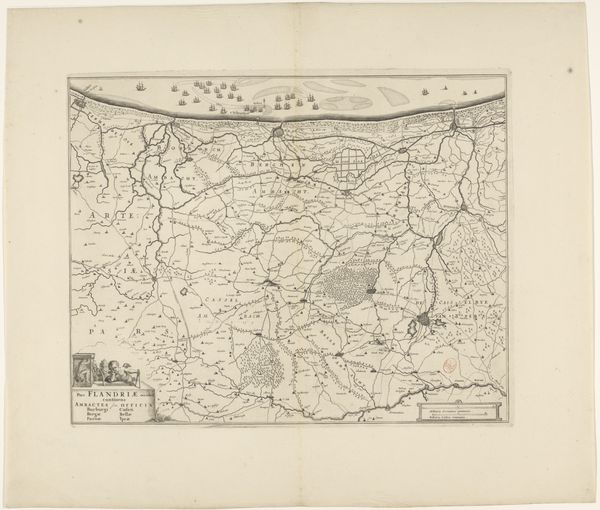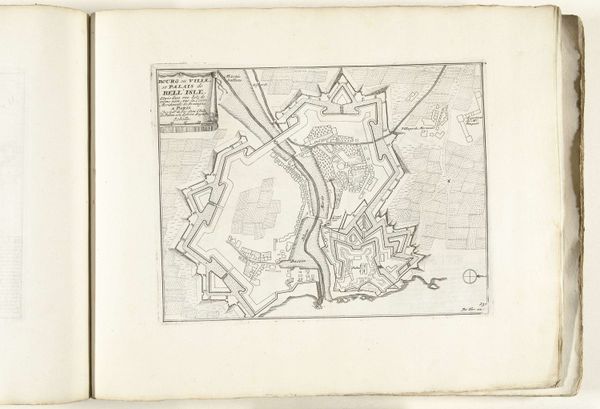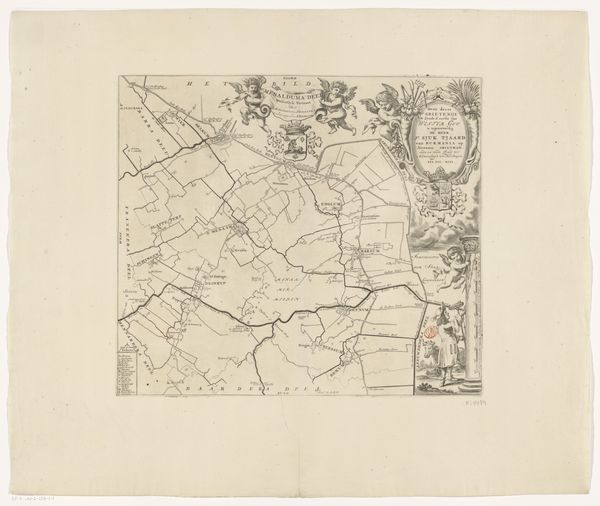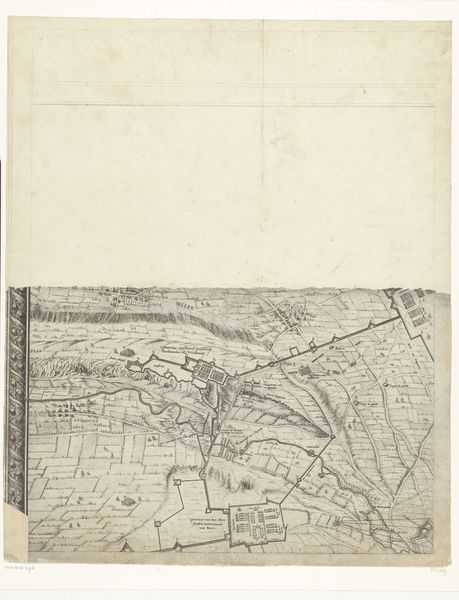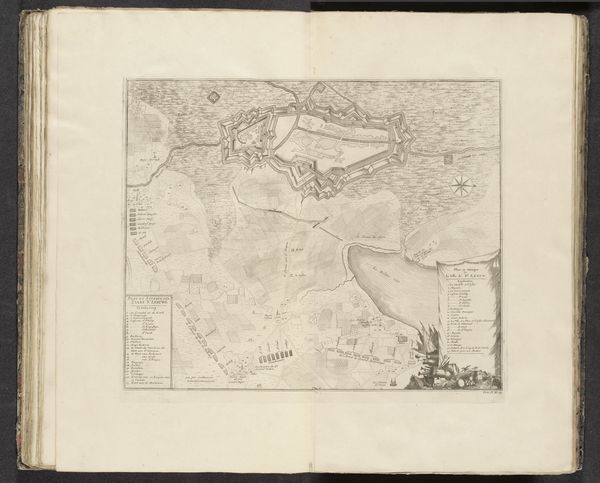
print, engraving
#
baroque
#
ink paper printed
# print
#
landscape
#
cityscape
#
history-painting
#
engraving
Dimensions: height 300 mm, width 415 mm
Copyright: Rijks Museum: Open Domain
Curator: Let’s discuss this detailed engraving, “Kaart van de veldslag bij Ekeren, 1703,” which translates to “Map of the Battle of Ekeren, 1703.” It's an early 18th-century print from an anonymous maker, found within the Rijksmuseum's collection. The media used seems to be ink on paper, crafted through engraving. What is your initial impression? Editor: My immediate reaction is that it is cold. Cold not only in tone – it’s monochrome, of course, with subtle shading—but in subject, right? The cartography feels stark, almost sterile. It’s about control and possession of space more than anything else, the record of a battle as resource extraction. Curator: That's a sharp reading. Considering it depicts the Battle of Ekeren, we must reflect on its place in the War of the Spanish Succession. The print offers an aerial view of the battlefield, complete with troop formations, fortifications, and geographical features. We see not just land, but a stage upon which political struggles were violently enacted. Editor: Precisely! And look at the fineness of the engraving – the deliberate rendering of each field, each line of defense. This isn’t just about conveying information; it's about imprinting power onto the land, quite literally. You can practically smell the gunpowder and see how materials available have played their part on either side of this dispute. It is interesting to think how important engraving has been in our understanding of events like this. Curator: Absolutely, we must not lose sight of how this artwork reproduces political and social hierarchies. These representations have influenced both the elite’s understanding of conflict as well as that of ordinary people and what those power struggles might mean for them. This artwork, reproduced in multiples and accessible through trade, shapes narratives of heroism, victimhood, and justification for violence along many social levels. Editor: Thinking about materials, I am drawn back to paper and ink. As readily available as those things are these days, how powerful was it to be able to create an image that can be so easily reproduced and shared. No painting, with its singular viewing experience, can claim to have held the attention and created propaganda quite so broadly. The ease of distribution gives new meaning to our understanding of “cartography.” Curator: Considering its role in illustrating and perhaps even glorifying war, its historical place in our cultural understanding is solidified. Maps like these can inadvertently immortalize military events, making it critical for us to consider how war impacts social constructs around gender and class during those periods of unrest. Editor: I agree entirely. Thinking through both the tangible craft and less tangible implications embedded into these images has brought up lots of thoughts. I do find myself still returning to a fundamental, material concern about production value having had such a lasting impact on people through history! Curator: Indeed, I will think about the way this printed map became, and still functions, as a narrative space for reflecting the politics of 18th-century warfare, reminding us how art can perpetuate—or resist—hegemonic control over land, and thus people's lives.
Comments
No comments
Be the first to comment and join the conversation on the ultimate creative platform.
